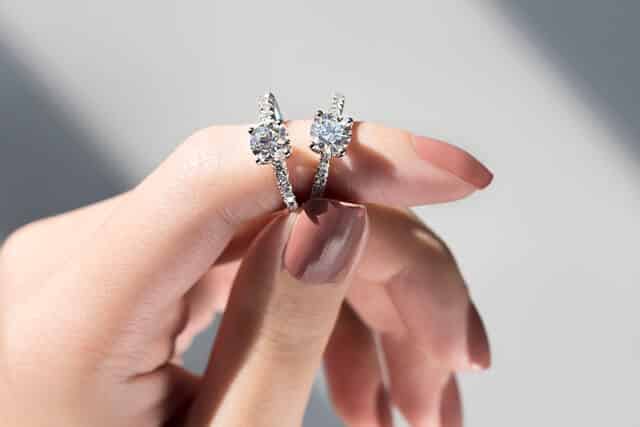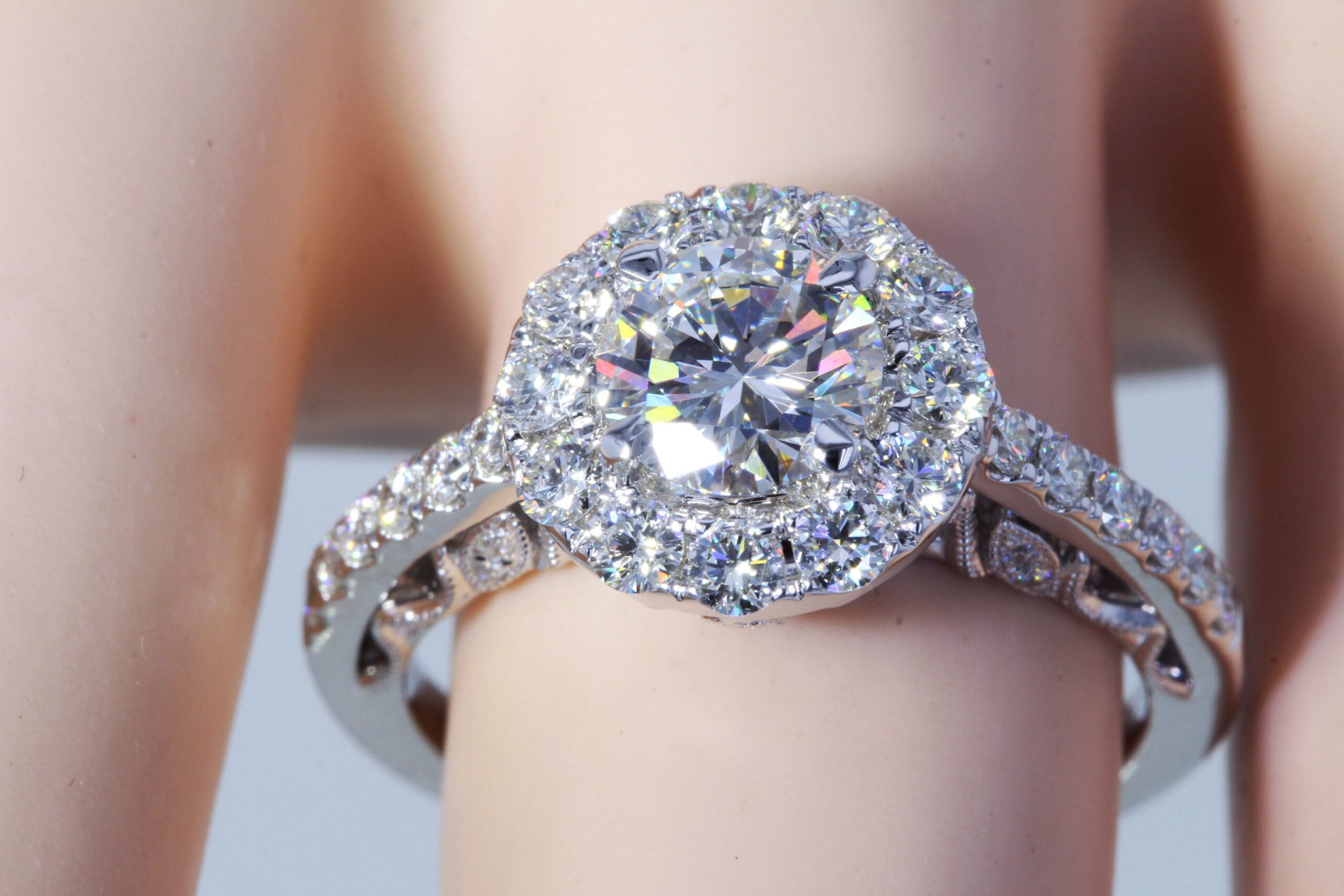Diamonds, the epitome of luxury and eternal love, have captivated humanity for centuries. But in today’s world, the traditional allure of mined diamonds faces competition from their laboratory-grown counterparts. So, when it comes to choosing between lab diamonds and mined ones, which shines brighter? Let’s delve into the heart of the matter.
What are Lab Diamonds?
Lab diamonds, also known as synthetic or cultured diamonds, are created in controlled environments that mimic the natural conditions in which diamonds form beneath the Earth’s surface. Through advanced technology, scientists replicate the process of crystallization, resulting in diamonds with identical chemical and physical properties to mined diamonds.
The Science Behind Lab Diamonds
In laboratories, carbon atoms are subjected to extreme heat and pressure, facilitating their arrangement into the crystalline structure of diamonds. This process, called chemical vapor deposition or high-pressure high-temperature synthesis, enables the production of gem-quality diamonds within a matter of weeks.
Advantages of Lab Diamonds
One of the primary advantages of lab diamonds lies in their environmental impact. Unlike traditional diamond mining, which involves extensive land disruption and habitat destruction, lab diamond production leaves a minimal ecological footprint. Additionally, lab diamonds are free from the ethical concerns associated with mined diamonds, such as forced labor and conflict financing. From a consumer perspective, lab diamonds offer significant cost savings without compromising on quality.
Quality of Lab Diamonds
Contrary to common misconceptions, lab diamonds boast exceptional quality, rivaling that of their mined counterparts. In terms of clarity, color, lab diamonds or mined, and carat, lab diamonds exhibit remarkable consistency and purity, thanks to the controlled conditions of their formation.
Are Lab Diamonds Real?
Absolutely. Lab diamonds possess the same chemical composition and crystalline structure as mined diamonds, making them indistinguishable to the naked eye. Their authenticity is validated by gemological certifications, ensuring transparency and consumer confidence.
What are Mined Diamonds?
Mined diamonds, as the name suggests, are sourced from natural diamond deposits deep within the Earth’s mantle. The extraction process involves open-pit mining or underground tunneling, leading to significant environmental disturbances.
Environmental Impact of Mined Diamonds
Diamond mining exacts a heavy toll on the environment, contributing to deforestation, soil erosion, and water pollution. Moreover, the carbon footprint of mined diamonds is substantial, given the energy-intensive processes involved in extraction and transportation.
Ethical Concerns with Mined Diamonds
Beyond environmental considerations, mined diamonds are fraught with ethical dilemmas. The trade of conflict diamonds, also known as blood diamonds, has fueled armed conflicts and human rights abuses in regions such as Africa, where diamond mining is prevalent.
Cost Comparison
While the allure of natural diamonds is undeniable, their hefty price tag often places them out of reach for many consumers. In contrast, lab diamonds offer a more affordable alternative without compromising on beauty or brilliance.
Quality of Mined Diamonds
Mined diamonds vary in quality depending on factors such as clarity, color, and cut. However, the unpredictable nature of diamond formation means that inconsistencies in these attributes are more prevalent compared to lab diamonds.
Certification and Authentication
Both lab diamonds and mined diamonds undergo rigorous certification processes to verify their authenticity and quality. Gemological institutes issue certificates detailing the characteristics of each diamond, man made diamonds, providing assurance to buyers.
Consumer Preferences
With growing awareness of the environmental and ethical implications of diamond mining, an increasing number of consumers are turning to lab diamonds as a responsible choice. However, traditionalists may still favor the natural allure of mined diamonds for their perceived rarity and prestige.
Longevity and Durability
In terms of durability, both lab diamonds and mined diamonds are virtually identical. With proper care, they can withstand the test of time, making them enduring symbols of love and commitment.
Cultural and Emotional Significance
For many, the allure of diamonds extends beyond their physical attributes to their cultural and emotional significance. Whether lab-grown or mined, diamonds symbolize love, strength, and eternity, transcending time and tradition.
Market Trends
The market for lab grown diamonds has experienced exponential growth in recent years, driven by shifting consumer preferences and technological advancements. As awareness of the environmental and ethical benefits of lab diamonds continues to spread, their popularity is expected to soar.
Future Prospects
Looking ahead, the diamond industry is poised for transformation, with lab grown diamonds projected to disrupt traditional mining practices. As sustainability and ethical sourcing become increasingly important to consumers, lab diamonds are well-positioned to shine bright in the years to come.
Conclusion
In the age-old debate of lab diamonds vs. mined, the choice ultimately boils down to personal values and preferences. While mined diamonds hold a timeless allure, lab diamonds offer a compelling alternative that aligns with modern ethical and environmental concerns. Whichever path you choose, rest assured that the brilliance of a diamond, whether born beneath the Earth or nurtured in a laboratory, will continue to captivate hearts for generations to come.

 Lab Diamonds vs. Mined: Making the Choice
Lab Diamonds vs. Mined: Making the Choice  Introduction to Fire Watch Services
Introduction to Fire Watch Services  The Ultimate Guide to Obtaining a Gold Ring
The Ultimate Guide to Obtaining a Gold Ring  What Are Bridge Loans and When Are They a Good Fit for You
What Are Bridge Loans and When Are They a Good Fit for You  The Art of Impressions: Creating Memorable Corporate Gift Boxes for Clients and Partners
The Art of Impressions: Creating Memorable Corporate Gift Boxes for Clients and Partners  Crafting Success in the Capital: Choosing the Right Office Space in Washington DC
Crafting Success in the Capital: Choosing the Right Office Space in Washington DC  The Road to Demat: A Comprehensive Journey
The Road to Demat: A Comprehensive Journey  7 Digital Marketing Tips For Your Candle-Making Business – Small Business
7 Digital Marketing Tips For Your Candle-Making Business – Small Business 